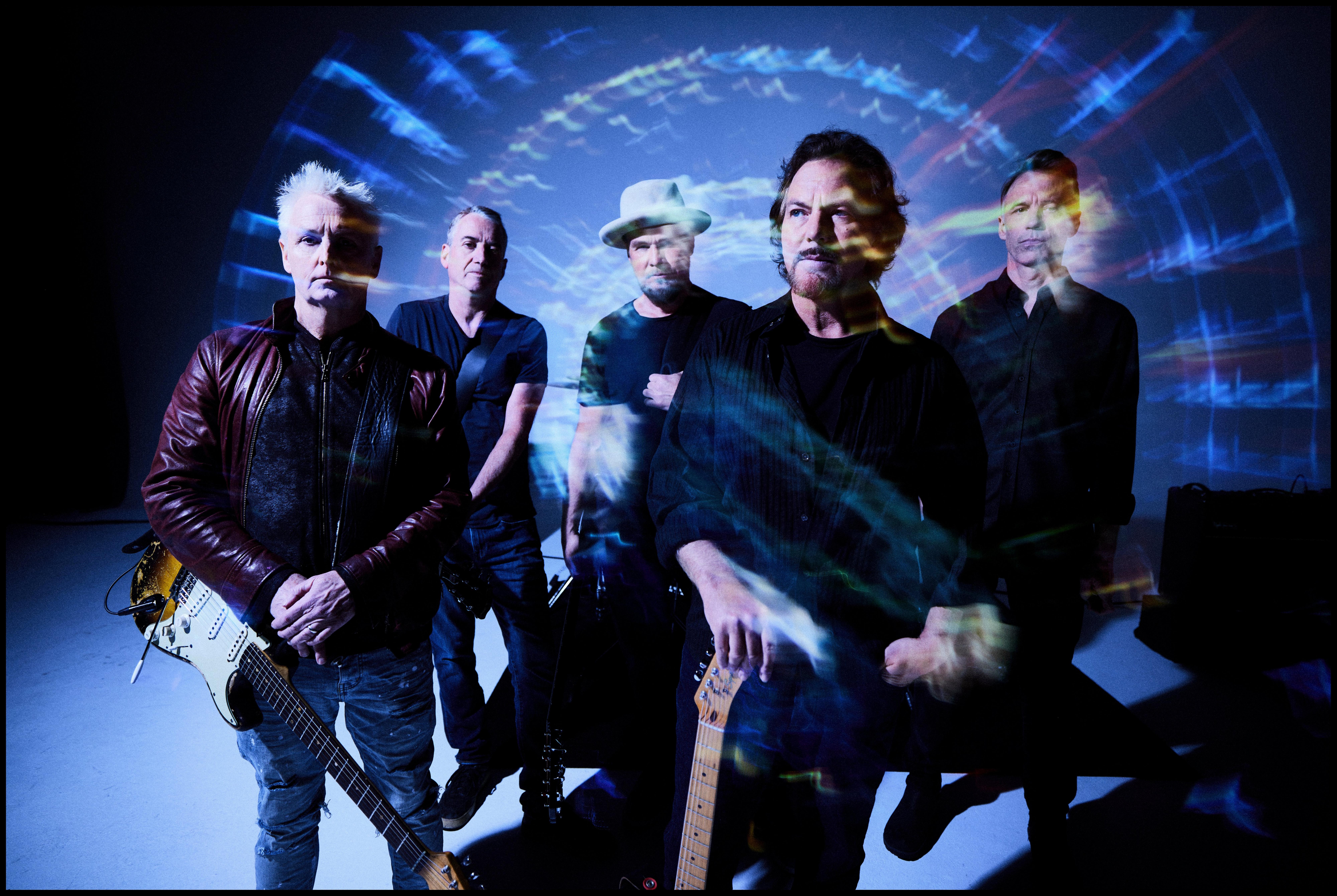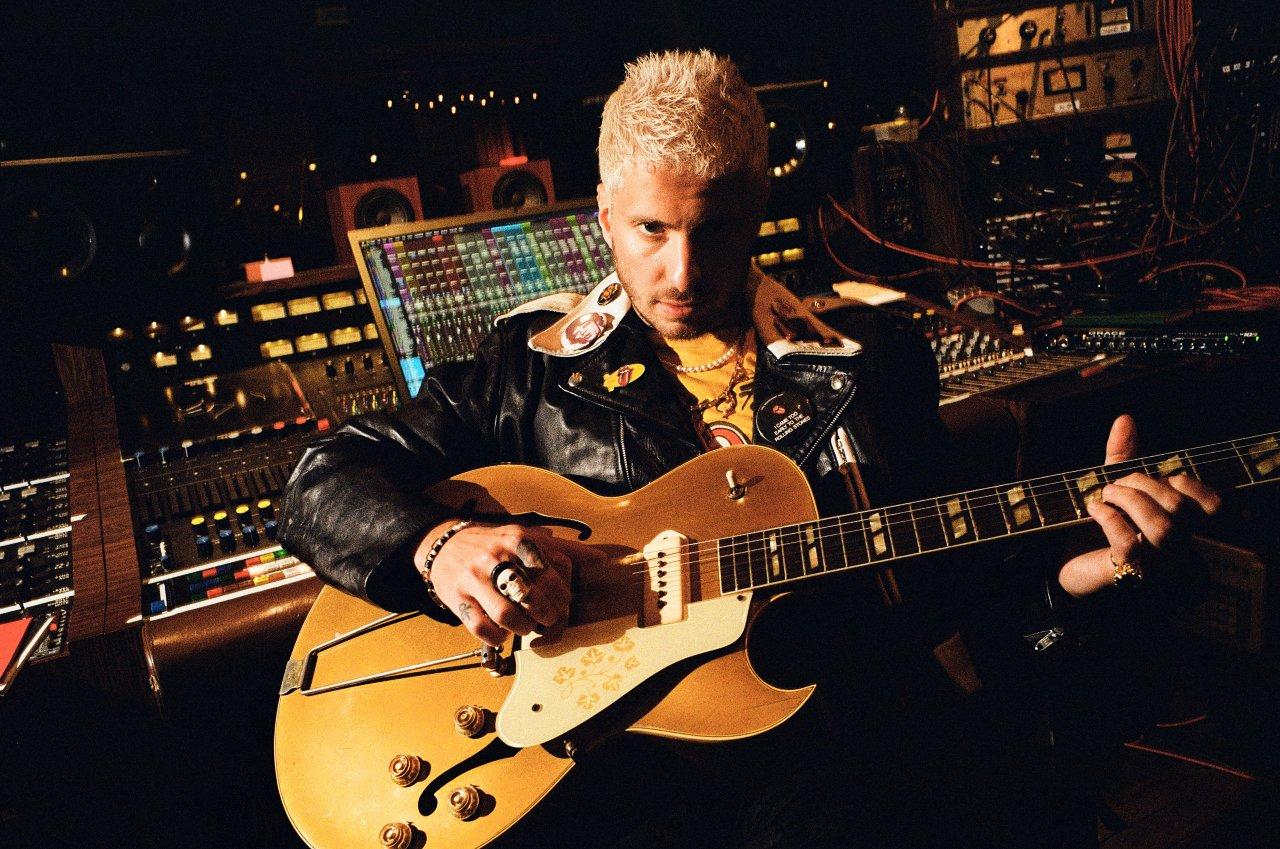Total hearing loss: devastating words to anyone, especially a pro musician. After AC/DC vocalist Brian Johnson was warned by doctors that "total deafness" would be the inevitable consequence of performing in large venues, the frontman decided to no longer tour with the GRAMMY-winning band.
All musicians can benefit from Johnson's cautionary tale and that of rock guitar virtuoso Paul Gilbert of the bands Mr. Big and Racer X. Also a solo artist who's released dozens of albums and played countless concerts, Gilbert loved cranking his amp as high as possible.
After decades of exposure to loud music, Gilbert began to lose his hearing. He says the worst part of hearing loss is disconnection from others. "It becomes difficult or impossible to have a conversation, so you start to drift more and more to emails, and further and further away from actual people. It's often too tedious to have someone explain something over and over again. So you just give up."
Gilbert has learned to adjust his playing while coping with hearing loss, but he still says living with impaired hearing is challenging.
"It's like being in a foreign country where you don't know the language, and never being able to come home," he says. "The good thing is that hearing loss hasn't been nearly as bad for me when it comes to music. In fact, in some ways I think my musical ability has improved."
Jennifer Batten, another consummate guitarist and veteran of tours with artists such as Jeff Beck and Michael Jackson, has become extremely sensitive to volume. It started early in her career, playing small clubs. "At the end of the night, I'd marvel at the new residual white noise I'd incurred," she remembers. "I was concerned about it but didn't start protecting my ears for years to come."
On the Jackson tours, Batten had to remove Jackson's vocals from her monitors because his signature yelps, hoots and hollers were too ear-piercing. In Beck's band, she rarely used hearing protection. "The problem with using plugs with someone like [Beck] is they might be fine for a loud tune, but then he'll take it down to a whisper volume and you miss all the details you need to hear," she explains.
"I'd find I'd be on the wrong sound patch and not realize it, so my use of plugs was on and off. I know I lost a lot of frequencies from those three years. We'd gig almost every night, so my ears couldn't recover. Sometimes before a soundcheck, my ears would be hot and sore."
For the last several years, Batten has used Sensaphonics' 3D Active Ambient IEM System (in-ear monitors or "in-ears"). "They have three drivers as well as a mic in each ear," Batten says. "It's wired to a belt-clipped box, so you can choose how much outside ambient sound you want."
Though she finds some ambient volume does come through that's not via the mics, Batten says it's the best product out there for her and a constant companion.
"My awareness that ears need 48 hours to repair — if they are going to repair — has made me always carry my in-ear monitors, whether I'm playing or listening," says Batten. "When I go to a show, I control the volume. At concerts, I reckon I listen at a third the volume of the rest of the crowd."
Musicians, however, aren't the only ones at risk of hearing loss. This past fall in Geneva, the World Health Organization held a meeting of stakeholders for hearing-loss prevention, prompted by WHO's prediction that 1.5 billion young people worldwide are at-risk for hearing loss in the next 15 years.
Artists such as Coldplay and Dave Matthews joined hearing awareness efforts by posting on social media about the importance of hearing. Their tweets encouraging fans to "respect your ears" on World Hearing Day on March 3 reached millions of fans.
Also raising the flag for hearing health are MusiCares and The Recording Academy's Producers & Engineers Wing, which have partnered for the GRAMMY Hearing Health Initiative to "do all we can to help reduce or eliminate hearing loss," according to Debbie Carroll, Senior Executive Director of MusiCares.
The initiative caught the attention of Pearl Jam at last winter's Austin City Limits, where MusiCares took custom ear impressions to make earplugs for concertgoers. "Pearl Jam realized they rarely had seen their audiences wearing ear protection," Carroll recounts.
At each Pearl Jam U.S. show this spring, MusiCares is offering limited-edition co-branded PJ X MusiCares earplugs. Beyond teaming with Pearl Jam, MusiCares is also hosting more than 50 hearing clinics at festivals and events across the country throughout the summer.
Custom earplugs such as Sensaphonics' 3-D system as well as hearing interventions have taken time. It was in the mid-1990s that California audiologist Lisa Tannenbaum discovered a relatively new concept in hearing-loss prevention for professional musicians by Sensaphonics' pioneering Dr. Michael Santucci. Prior to that, pro audio engineer Marty Garcia of Future Sonics had introduced his Ear Monitors brand, debuted onstage by Todd Rundgren's band in 1985. Rundgren and Utopia were the earliest high-profile adopters of in-ear monitors, which allow musicians to hear music directly in their ears at safer levels while reducing competing stage volumes.
Santucci's own line of products included early in-ear monitors, and Tannenbaum was inspired to start her niche business, Musician's Hearing Services. By 2000, Tannenbaum was well-established in San Francisco and traveling regularly to Los Angeles, serving clients such as Carlos Santana, Stevie Wonder and Los Tigres Del Norte. Tannenbaum counsels clients that while IEMs allow for lower stage volume levels than monitors, ultimately it's the user's responsibility to keep the IEMs at a low-enough level.
She says a baseline hearing test (audiogram) is critical for monitoring hearing integrity over time. Taking a thorough history details other activities that can compromise hearing, including hunting, motorcycling and using loud machinery.
Over the years, Tannenbaum has seen IEM technology advance dramatically, and she's enthusiastic about the advent of products that promote hearing safety by resolving issues such as isolation and the urge to remove an earpiece while performing. She's noticed increasing numbers of music consumers investing in hearing protection, pointing out the rise in custom, high-fidelity earplug purchases during the past six years. Now Tannenbaum's hearing health consultations emphasize career longevity for pro musicians.
"Musicians need to be aware of their options and that ear damage from music exposure is totally preventable," she says. "With today's resources — high-fidelity earplugs, IEMs, ambient microphones, sound-level measurement devices, and good audiological guidance — musicians can manage their ear destiny."
Doing exactly that is Eric Singer, longtime drummer for Kiss. An in-demand player for some of the loudest bands ever, including Alice Cooper and Black Sabbath, Singer has toured for 30 years. He says balancing hearing preservation with being able to hear what's playing can be "a real catch-22."
"What you're hitting produces a lot of peripheral sound around you. Yet you're trying to hear yourself through tiny little speakers in your ears. To find a comfortable level, you sometimes have to turn up the volume in the in-ears really loud to overcome the inherent natural volume the drums produce. Sometimes that defeats the whole purpose of trying to protect yourself."
Singer uses a live mixing console to individually control the volume of each drum and cymbal, as well as his bandmates' instruments and vocals. Having his own console allows him to simply reach over and slide the faders at his own discretion and desired comfort.
"Having control over all the levels is imperative to protecting your ears from high-level volumes," he says. In rehearsal, he also wears the kind of earmuffs worn at gun ranges. Singer suggests musicians experiment to find what works best for them.
"Be open-minded," he suggests. "Get other professionals' opinions. You may discover that someone else's way works for you. Do research online. Talk to monitor guys, sound engineers. Know your options."
As an expert creator of hearing solutions, Santucci reflects on where state-of-the-art hearing protection has been and where it's going. In 1989, the first ER earplugs were invented by Etymotic Research, with Sensaphonics as a beta-testing facility. "To this day, the ER series is what we've been recommending, producing and distributing for MusiCares programs," Santucci says. "It's still considered the best passive earplug on the market."
And more progress is yet to come.
"I read somewhere that chickens can regenerate their hearing if it's damaged, just like we can grow back our hair," Gilbert muses. "It would be great if genetic researchers could figure out how to install that ability in people. I'd lay a couple eggs to be able to hear like I used to!"
(Laurel Fishman is a writer and editor who specializes in entertainment media. She is an advocate for the benefits of music making, music listening, music education, music therapy, music-and-the-brain research, and music and interdisciplinary studies.)




